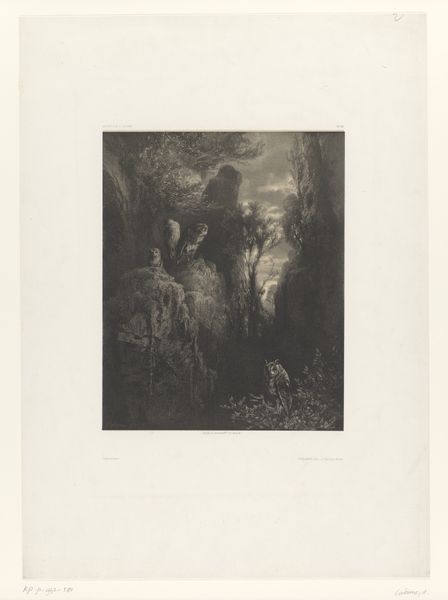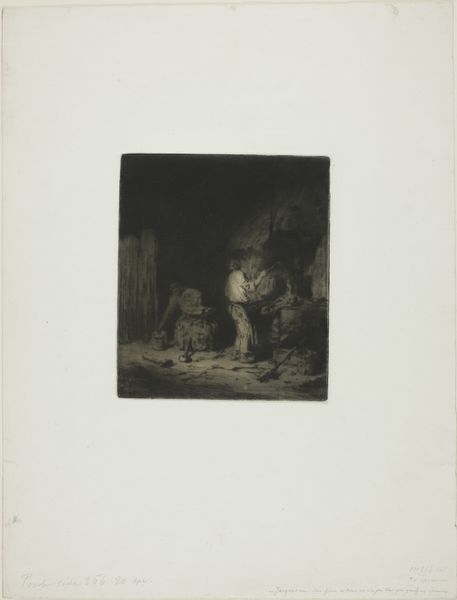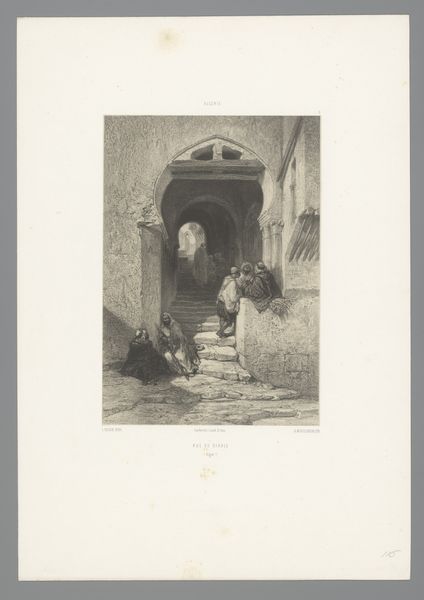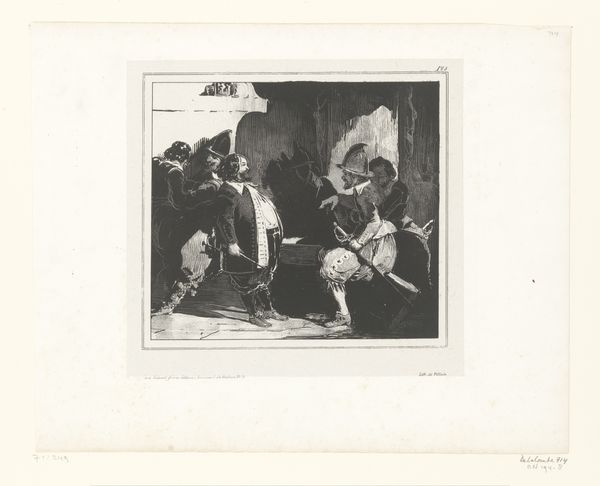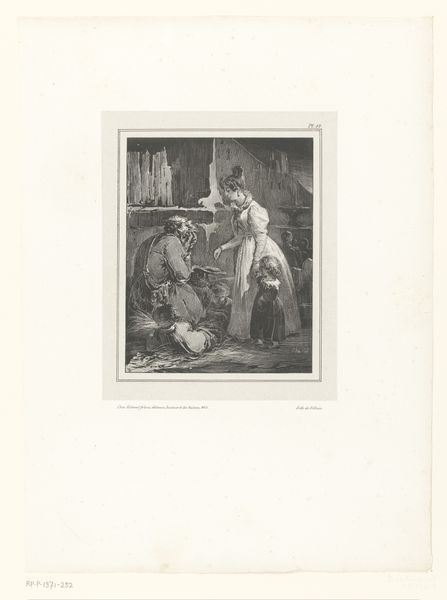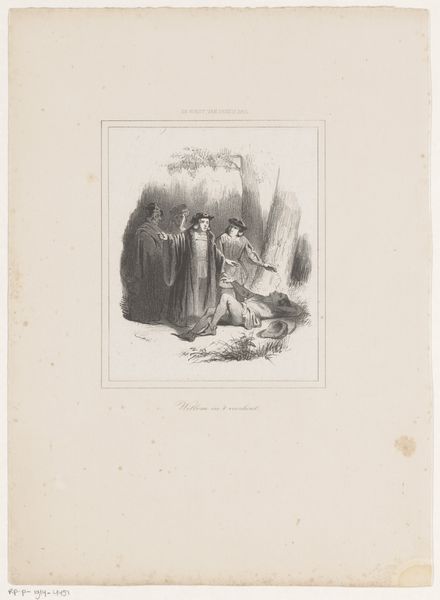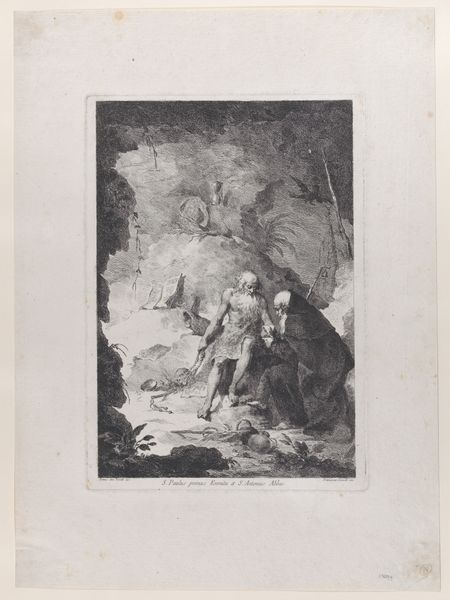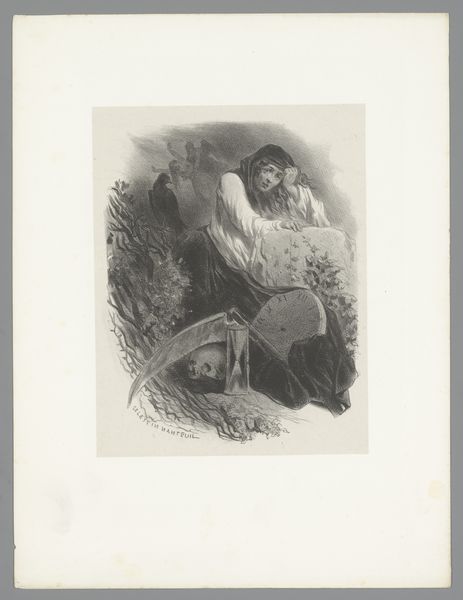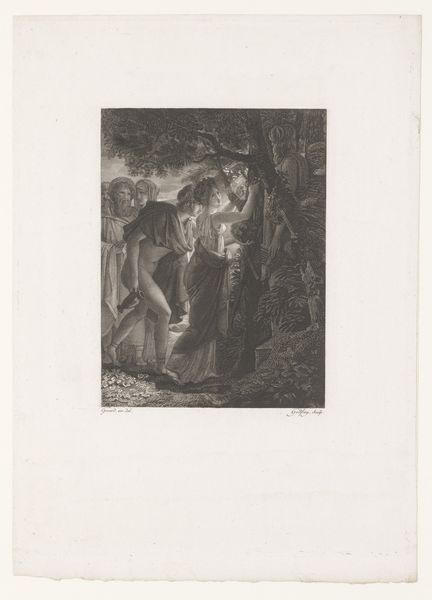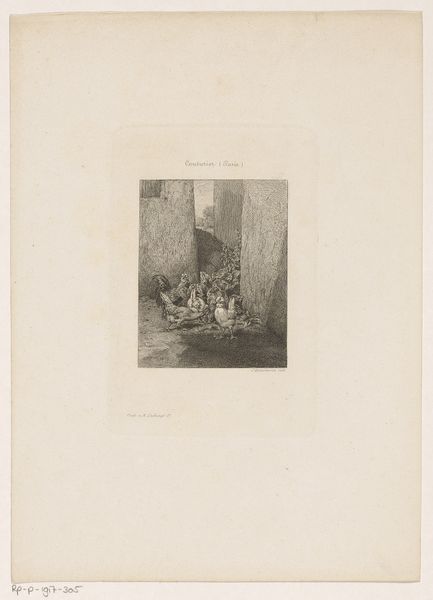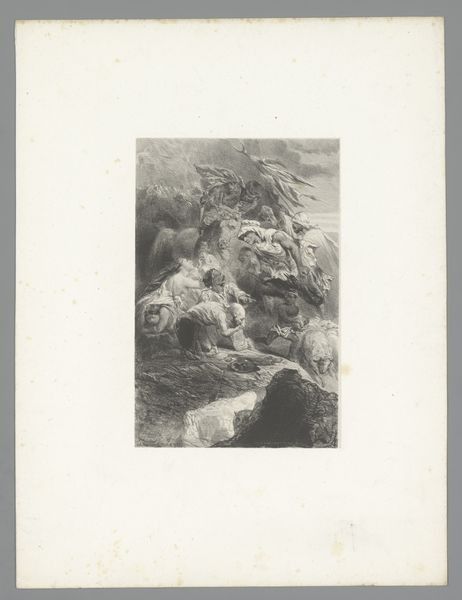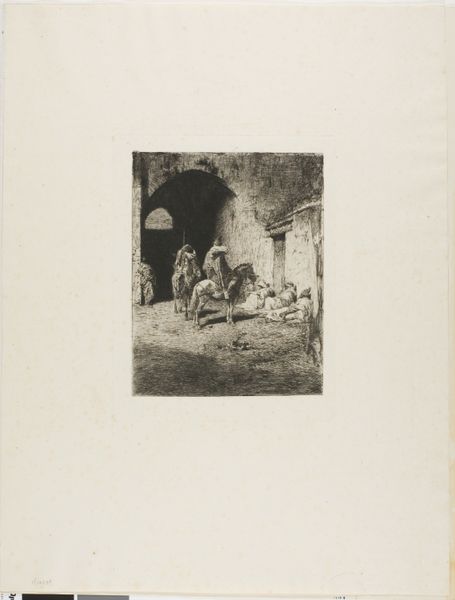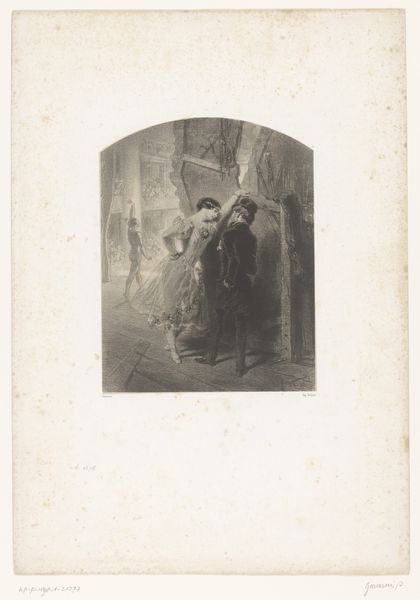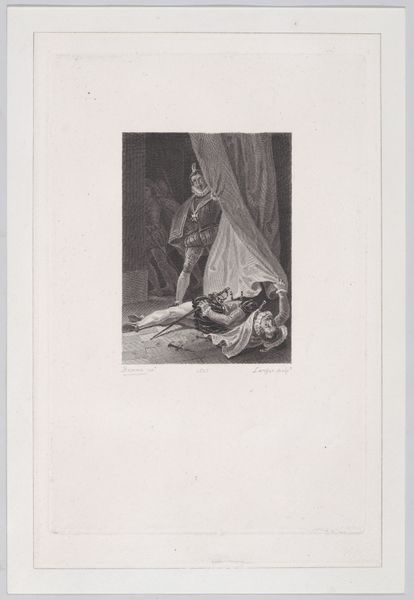
drawing, print, engraving
#
drawing
# print
#
landscape
#
figuration
#
genre-painting
#
engraving
#
realism
Dimensions: height 446 mm, width 315 mm
Copyright: Rijks Museum: Open Domain
Editor: Here we have "Wachters bij ingang van grot," or "Guards at the entrance of a cave," an engraving done by Adolphe Mouilleron between 1848 and 1862. The stark contrast between light and shadow is immediately striking, creating this almost theatrical sense of secrecy. What do you see in this piece? Curator: The setting itself is a statement. Caves, historically, are spaces of refuge, but also places of marginalization and the unknown. These 'guards'— who are they guarding from, and perhaps more importantly, who are they guarding? Consider the power dynamics inherent in this image; we see these figures, presumably men, at the entrance of a space they likely control. Editor: I see what you mean. The one lying down almost seems nonchalant, while the others are more alert, suggesting a hierarchy maybe? Curator: Exactly. And it invites us to question what authority these men wield, especially within the context of 19th-century societal structures. Are they symbols of protection or control, reflecting anxieties of that era? It is interesting how they have seemingly made a home out of this. What would you say is so important within the cave, which is more important than a secure house or city? Editor: That makes me think about colonization, almost. Setting up camp on someone else’s land and guarding their own interests... Curator: Precisely. The cave becomes a contested space, ripe for interpreting as a microcosm of larger societal issues of ownership and access. Mouilleron may well have meant it to simply show a scene he encountered; it also makes me consider that those without much money would need to find whatever places they can, which may even be dangerous, like caves. Editor: This definitely gives me a lot to think about beyond just the initial impression! It makes me wonder if the artist had specific political motives as well. Curator: Whether conscious or unconscious, art often reflects the tensions and power dynamics of its time. Viewing these historical pieces critically is key. It will always lead to new questions to guide our understanding of not just art, but humanity.
Comments
No comments
Be the first to comment and join the conversation on the ultimate creative platform.
